Creamy Seafood Risotto Recipe
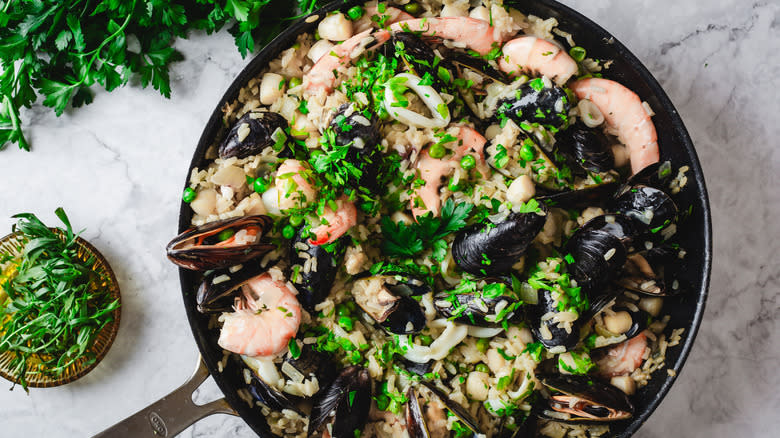
With its creamy rice and endless possibilities for mix-ins, it's hard to picture something more comforting than risotto. This seafood risotto is a sophisticated version that's bright with wine and lemon flavors and filled with green herbs. It's loaded with an array of fresh seafood that adds complex flavors and makes the whole dish feel truly luxe. According to Ksenia Prints of At the Immigrant's Table, the secret to the perfect risotto is the technique.
Though the end result feels cheesy, there is not an ounce of cream or Parmesan in our version. The recipe starts with a base of arborio rice that's stirred slowly with gradually added white wine and warm chicken stock, which gives the rice its perfect, creamy consistency. Once it reaches an al dente texture, an assortment of seafood is gently folded in to cook briefly. Plump mussels, tender rings of calamari, sweet bay scallops, and full-fleshed shrimp add pops of briny seafood throughout each bite. Finally, a handful of peas, tarragon, and parsley provide color and freshness, a subtle, anise-like flavor, and sweetness. In just 25 minutes, this elegant seafood risotto comes together for a restaurant-worthy meal that still feels like home.
Read more: 44 Types Of Pasta And When You Should Be Using Them
Gather The Ingredients For This Seafood Risotto Recipe

To make this seafood risotto, you will need olive oil and onion as the initial aromatics for the dish, as well as white wine and savory chicken stock to gradually cook the rice. The best type of short-grain rice to use in this dish is Arborio rice, which is perfect for achieving the creamy risotto texture. For the seafood, you'll need fresh mussels, calamari rings, bay scallops, and whole shrimp. Frozen peas, fresh tarragon, and fresh parsley are used as a garnish to provide color, texture, and herbaceous flavor to the dish. Quality ingredients like fresh seafood, chicken stock, and herbs make all the difference in risotto.
Step 1: Preheat Oil In Pan
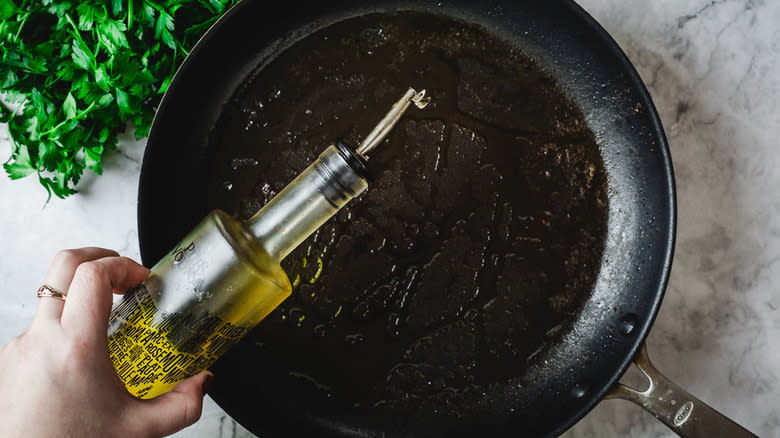
Heat the olive oil in a large skillet over medium heat.
Step 2: Saute Onion
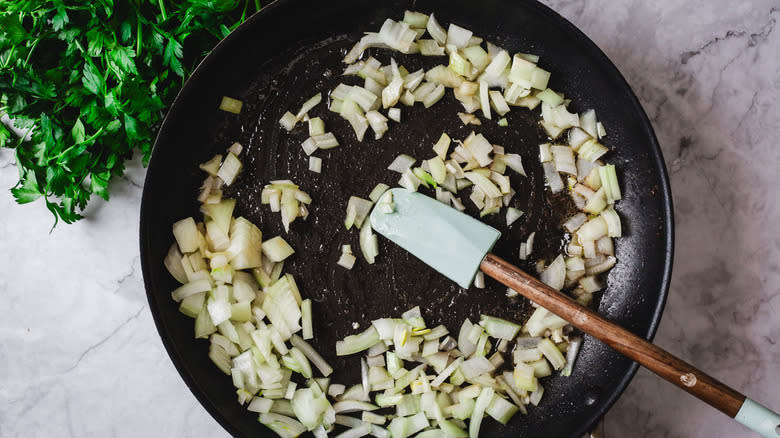
Add the onion and saute until translucent, about 2 minutes.
Step 3: Saute Rice

Add the Arborio rice and stir to coat with oil. Cook, stirring frequently, until the rice becomes translucent, about 2 minutes.
Step 4: Add Wine
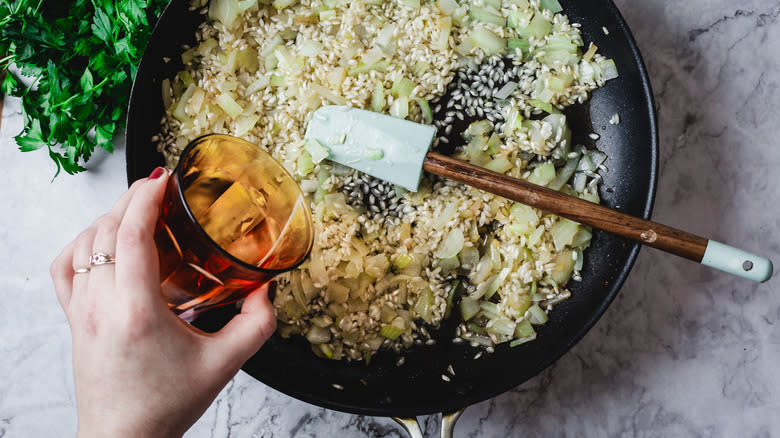
Pour in the white wine and stir until absorbed.
Step 5: Add Stock And Cook The Risotto
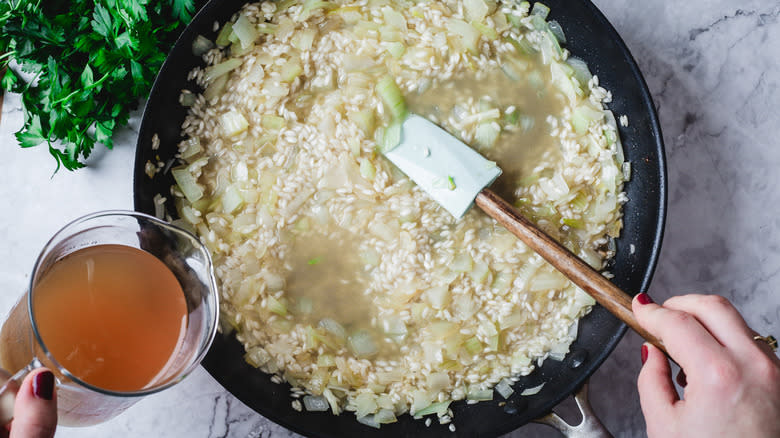
Add ? cup of the warm stock and stir until absorbed. Continue adding the stock ? cup at a time, stirring frequently after each addition, until the rice is al dente, about 16–18 minutes in total.
Step 6: Add Peas And Tarragon
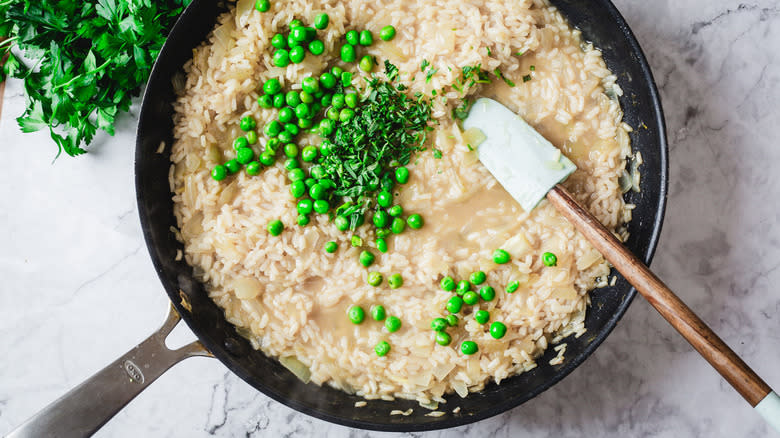
Stir in the frozen peas and tarragon.
Step 7: Add Seafood

Add the mussels, calamari, scallops, and shrimp. Cook for 2–3 minutes, until seafood is cooked through.
Step 8: Add Parsley And Season
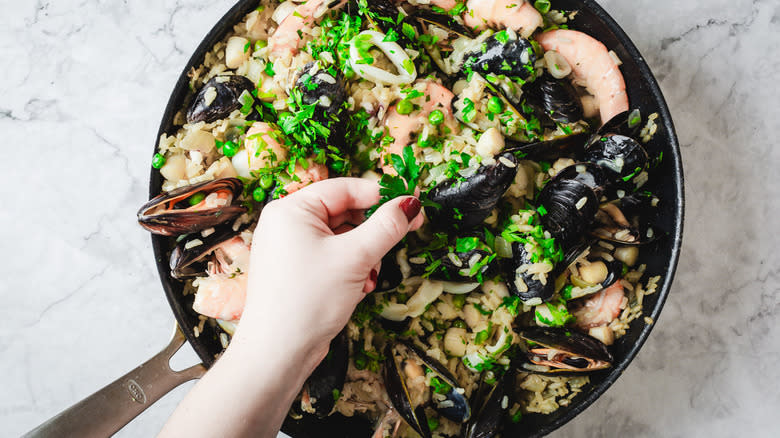
Season to taste with salt and pepper, and top with diced parsley.
Step 9: Serve

Serve the seafood risotto immediately.
What Kind Of White Wine Works Best In This Seafood Risotto?
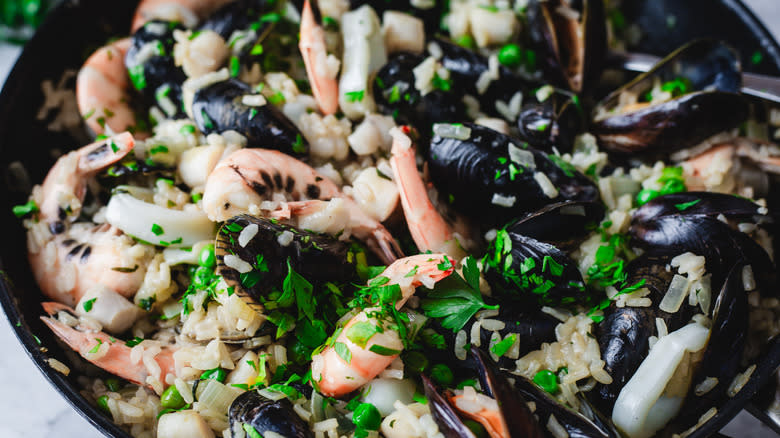
When making seafood risotto, it is best to use a dry, unoaked white wine that will allow the flavors of the shrimp, scallops, and herbs to shine. The wine is not meant to be the star in risotto; it's used to lend brightness and allow the rice to absorb liquid. A subtle, dry white that offers citrus and green apple flavors suits the supporting role nicely. Our favorites to use in risotto are Pinot Grigio or Sauvignon Blanc. Pinot Grigio's light body won't overwhelm the risotto, while the stone fruit notes of a Sauvignon Blanc can provide depth. The crisp acidity of both of these varieties will balance out the richness of the dish.
You can try other wines, as well, but just steer clear of anything too sweet, too heavy, or too strongly flavored. In particular, stay away from sweet wines like Riesling or Moscato, as the sugar will make the risotto taste cloying. You also want to avoid heavily oaked Chardonnay -- the woody notes will clash with the delicate seafood.
Can I Prepare The Seafood Risotto Ahead Of Time? Can It Be Frozen?
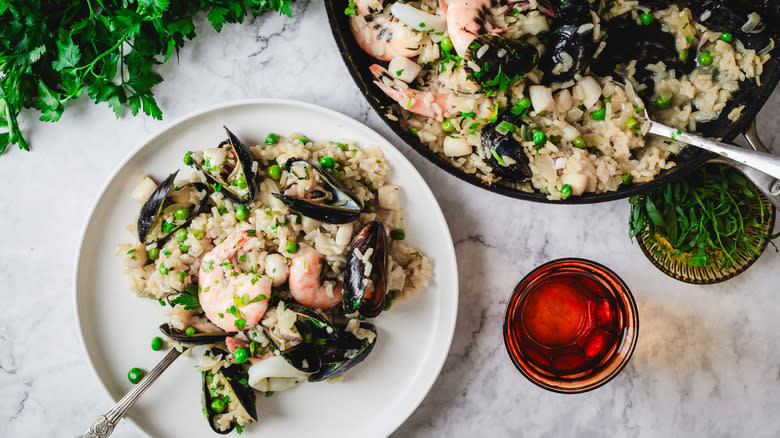
Risotto is best enjoyed freshly made and served immediately, given the seafood's delicate texture and susceptibility to becoming rubbery if reheated. However, if pressed for time, you can prepare it partially in advance. Get the risotto to the point just before adding the seafood, then spread it out on a sheet pan and let cool completely. Transfer the cooled risotto to an airtight container and refrigerate for 1–2 days. When ready to serve, gently reheat the risotto over low heat, adding a splash of stock if it seems dry. Stir frequently to prevent sticking, and heat through until it is steaming hot. Only then should you fold in the fresh seafood and continue cooking just until it becomes opaque, 2–3 minutes. This method allows you to enjoy creamy, rich risotto on a busy night while still finishing with fresh, tender seafood. Freezing fully cooked risotto is not recommended, as the texture will deteriorate and it will taste gummy. But, par-cooking the rice will allow you to enjoy from-scratch flavor later in the week. Just be sure to cool and refrigerate the rice properly within 2 hours and use within a couple of days.
Creamy Seafood Risotto Recipe
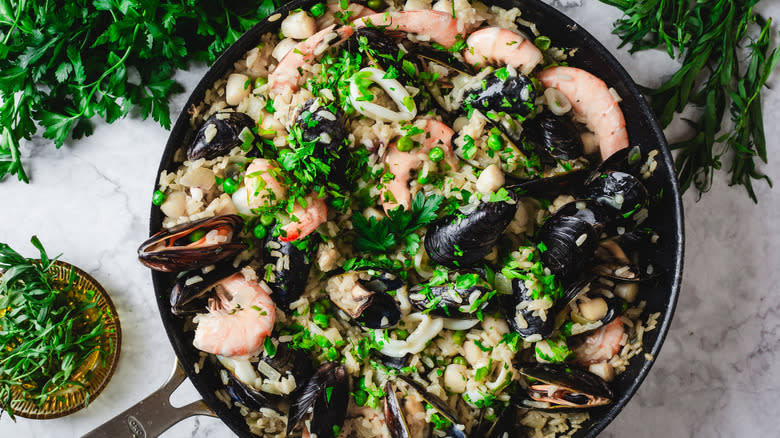
Prep Time: 10mCook Time: 25mYield: 4 servingsIngredients
2 tablespoons olive oil
1 small onion, diced
1 cup Arborio rice
? cup white wine
4 cups warm chicken stock
1 cup frozen peas
2 teaspoons fresh tarragon, diced
8 ounces mussels, cleaned
8 ounces calamari, sliced into rings
8 ounces small bay scallops
8 ounces shrimp, shell and tail on
Salt and pepper, to taste
2 teaspoons minced fresh parsley
Directions
Heat the olive oil in a large skillet over medium heat.
Add the onion and saute until translucent, about 2 minutes.
Add the Arborio rice and stir to coat with oil. Cook, stirring frequently, until the rice becomes translucent, about 2 minutes.
Pour in the white wine and stir until absorbed.
Add ? cup of the warm stock and stir until absorbed. Continue adding the stock ? cup at a time, stirring frequently after each addition, until the rice is al dente, about 16–18 minutes in total.
Stir in the frozen peas and tarragon.
Add the mussels, calamari, scallops, and shrimp. Cook for 2–3 minutes, until seafood is cooked through.
Season to taste with salt and pepper, and top with diced parsley.
Serve the seafood risotto immediately.
Read the original article on Tasting Table.